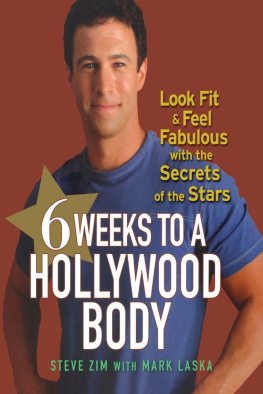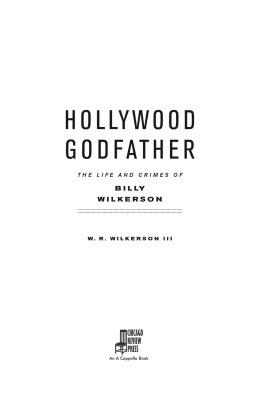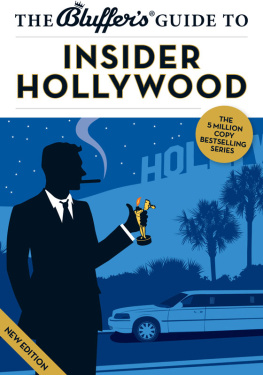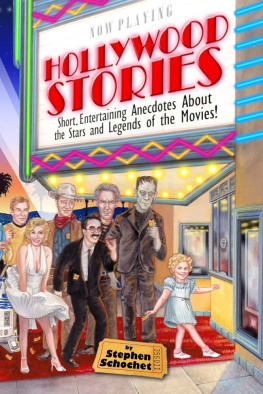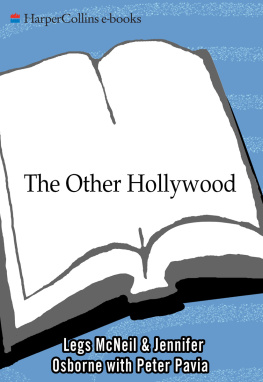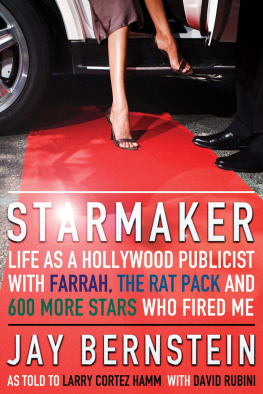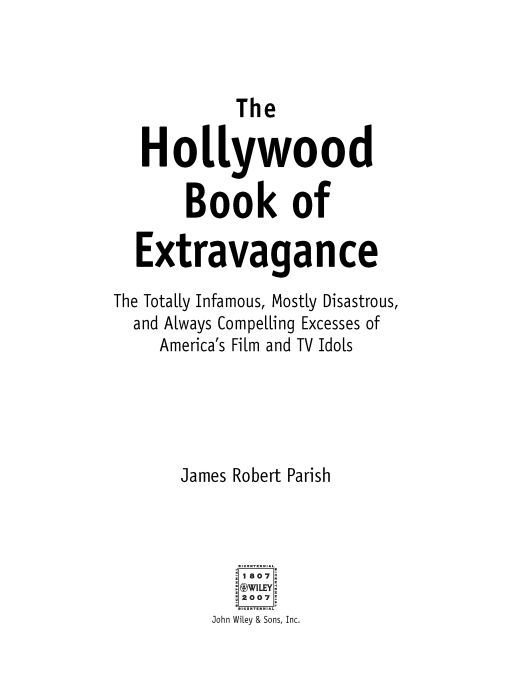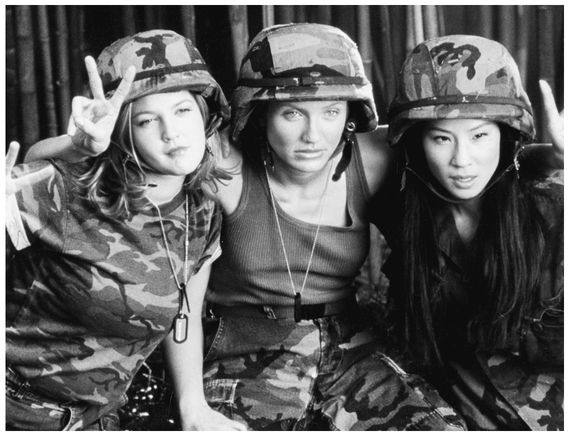Table of Contents
In memory of Purrfect (1990-2006),
an extraordinary cat
Acknowledgments
I wish to thank the following for their kind cooperation on this project: Academy of Dance on Film (Larry Billman), Patrick Agan, Billy Rose Theater Collection of the New York Public Library at Lincoln Center, Ronald L. Bowers, John Cocchi, Rachel Decoste, Douglas Fairbanks Center for Motion Picture Study, David Ehrenstein, Allan Ellenberger, Filming Today Press (G. D. Hamann), Dave Finkle, Professor James Fisher, Alex Gildzen, Pierre Guinle, Harry Haun, In Magazine (Jeremy Kinser), JC Archives, Lynn Kear, Shawn Levy, Alvin H. Marill, Mart Martin, Lee Mattson, Eric Monder, Museum of Television & Radio (Jane Klain), Scott OBrien, Stephen OBrien, Jay Ogletree, Jerry Oppenheimer, Kimberly OQuinn, Photofest (Jill Goodwin, Howard Mandelbaum, and Ron Mandelbaum), Michael R. Pitts, Barry Rivadue, David Rode, Jonathan Rosenthal, John Rossman, Brad Schreiber, Margie Schultz, the late Arleen Schwartz, Nat Segaloff, Stephen M. Silver-man, Andr Soares, Sam Staggs, David Stenn, Allan Taylor (editorial consultant, copy editor, and indexer), Lou Valentino, and Steven Whitney.
With special thanks to my editor, Eric Nelson, and my agent, Stuart Bernstein.
Introduction
During the last century, many entertainers achieved sudden, spectacular success in Hollywood. However, few enjoyed such a swift trajectory to fame as did the iconoclastic James Dean (1931-1955).
In the early 1950s, the Indiana-born actor was just another struggling young performer in New York City, competing with his peers for stage and TV assignments. But by mid-1954, Dean was under contract to Warner Bros. and starring in the big-screen adaptation of John Steinbecks East of Eden. Already, there was industry buzz that he was the successor to such recent trendsetting leading men as Montgomery Clift and Marlon Brando. As Jimmys star continued to rise, his ego swelled. He became increasingly eccentric, impetuous, self-contained, and distrustful of other peoples motives. Because of Deans incredible box-office potential, Warner Bros. coddled him, overlooking his persistent rebellious ways and self-indulgent, odd behavior. The more leeway the studio and the enthralled Hollywood community gave him, the more (deliberately) unorthodox Jimmy became. He appeared to be greatly amused by his growing celebrity power, which allowed him to overtly disregard the conventions of the Tinseltown establishmentand get away with it.
Then, in late September 1955, Dean died in a car crash near Cholame, California, just as his screen popularity was zooming to enormous heights. He was only 24 years oldin the prime of life. Thereafter, he remained frozen in the publics mind as the maverick icon who had so successfully set old-guard Hollywood on its heels. Deans star continues to shine brightly to this day, many decades after his death.
Deans extreme flaunting of social and professional conventions made him all the more appealing to his teenage fans. They thrived vicariously on his antiestablishment approach to most everything and accepted his self-indulgent ways as his due. This attitude was typical in that the public expected, wanted, and often demanded that their show business favorites lead supersized lifestyles, gleefully flaunting conventions and thriving on material excess. (In actuality, many show business celebrities seemingly glamorous, unconventional, and exciting existences became more pivotal to their fame and success than their actual professional accomplishments.)
The Hollywood Book of Extravagance focuses on a selection of colorful Tinseltown celebrities who managed to live larger than their contemporaries in the entertainment world, often thanks to an insatiable appetite for, among other things, power, liaisons, or controlled substances.
Over the years, many Hollywood personalities have succumbed to conspicuous living, overindulging their bad habits, colossal egos, hang-ups, and idiosyncratic behavior. This behavior has not diminished in the new millennium, providing much grist for the rumor mills and celebrity watchers.
PART 1
So Much, So Young
Drew Barrymore
(February 22, 1975-)
Drew Barrymores self-destructive actress aunt, Diana Barrymore (1921-1960), titled her autobiography Too Much, Too Soon. That expression easily could have been applied to Drew, who in 1982, at age seven, became world famous for her role in the blockbuster movie E.T.: The ExtraTerrestrial . According to Drew, Virtually overnight, everybody knew me, and yet nobody knew me. I mean the real me. From early on, I was always this remote, dreamy little girl who loved escaping reality by acting in movies.... Without work, I believed I was nothing.
By the time Drew reached her early teens, she had become a serious substance abuser. Without the ego-boost of work, I got into trouble with liquor and drugs by trying to run from everything. Or to numb it. I was the party girl on the run. If I was high, I thought everything was fine. It seemed the out-of-control Drew had fallen into the same trap as her famous show business forebears, including her legendary grandfather, John Barrymore (and his celebrated siblings Ethel and Lionel), and her own actor father.
Drew Barrymore both starred in and coproduced 2000s Charlies Angels. Her coleads were Cameron Diaz (center) and Lucy Liu (right).
Drew Blyth Barrymore was born in 1975, in Culver City, California, the only child of John Drew Barrymore (also known as John Barrymore Jr.), a former actor turned alcoholic, and Ildiko Jaid Mako Barrymore, a waitress and wannabe actress. The wild and rebellious John Jr. had started making movies in 1950, and, for a brief span, the striking young man seemed destined for fame. However, he got sidetracked by alcohol and bizarre behavior, which sabotaged his future. When he met Jaid in the early 1970s, he was already twice divorced and his life was in tatters. Nevertheless, Jaid was thrilled to be in the company of a member of the acclaimed Barrymore clan. The couple married but were living apart before Drew was born. (Over the years, John Jr. periodically reappeared in his daughters life, usually drunk and begging for a handout. He died in 2004.)
When Drew was a toddler, one of Jaids friends gave a photo of the cute girl to a casting agent. This led to Drews being hired for a dog-food commercial. Thereafter, in addition to more commercials, she began winning brief acting roles, as in 1980s Altered States. After she appeared in E.T., the young Barrymore was much in demand. Meanwhile, her mother stopped waitressing in order to promote her daughters career and pursue her own acting opportunities.
The suddenly famous Drew popped up everywhere: she hosted an installment of TVs Saturday Night Live, became a regular on the talk show circuit, and attended premieres, nightclubs, and private parties accompanied by her mother. The youngster thrived on the acceptance she received in industry circlesit compensated for her inability to relate to her classmates or deal successfully with her mother (who reveled in her daughters success but was envious of her achievements).




